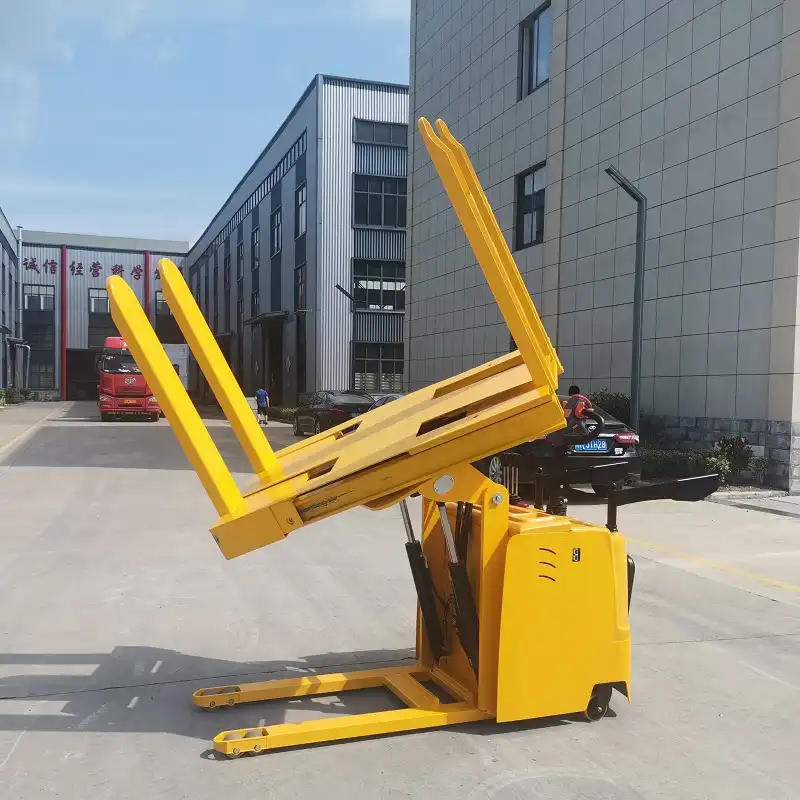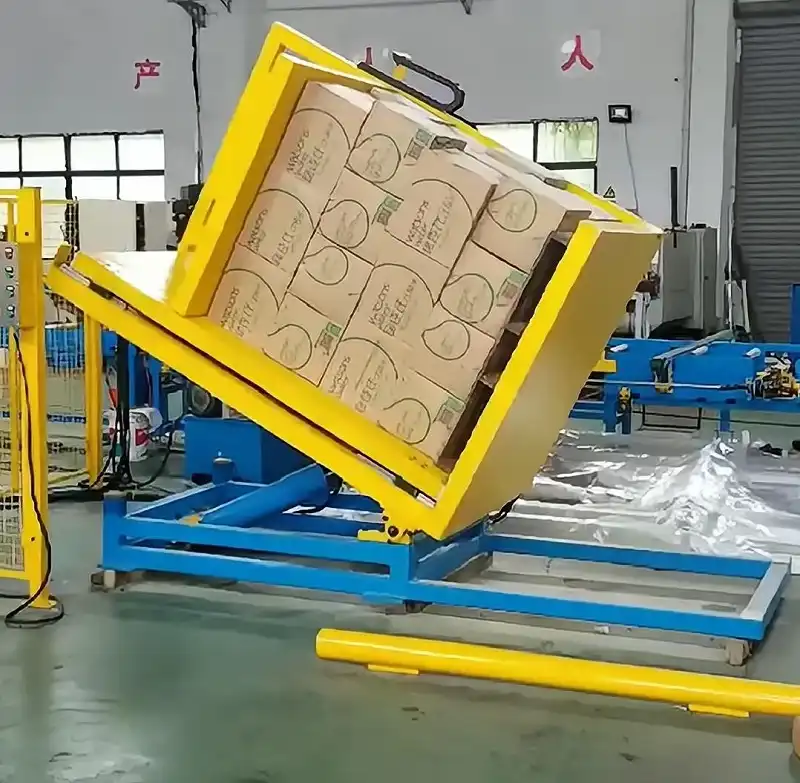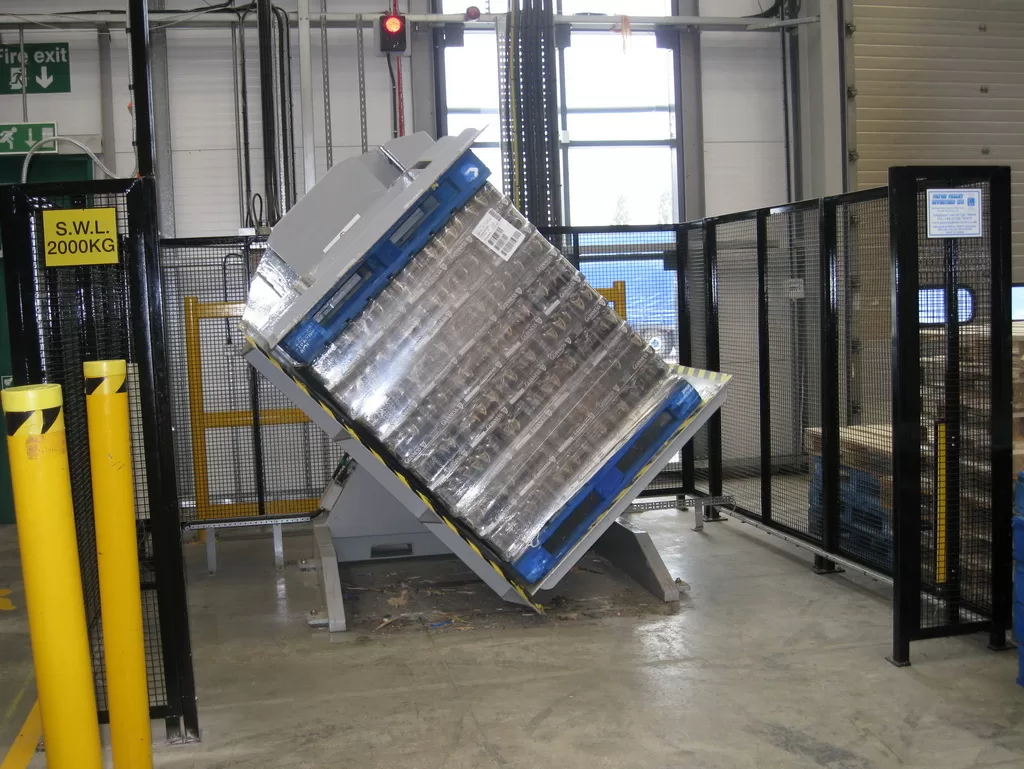What Key Factors for Choosing a Used Pallet Inverter?
Choosing a used pallet inverter can feel like navigating a maze. With countless options, varying conditions, and price tags that seem too good—or too high—to be true, making the right decision requires careful thought. But, when done wisely, investing in a used pallet inverter can save significant costs without compromising on performance or reliability.
[featured image: A used pallet inverter displayed in a warehouse, with labels showing key features and maintenance highlights.]

For businesses trying to balance efficiency and budget, the idea of buying used equipment is compelling. Yet, this choice is only as good as the evaluation process. Whether you're seeking to optimize costs or minimize downtime, understanding what to look for in a used pallet inverter is essential.
Making the right decision boils down to knowing how to assess condition, compatibility, and operational efficiency—all while avoiding pitfalls.
[claim] Choosing a used pallet inverter isn’t just a transaction; it’s an investment in efficiency and operational continuity.
Table of Content
-
What Are the Benefits of Buying a Used Pallet Inverter?
-
How Can You Evaluate the Condition of a Used Pallet Inverter?
-
Why Is Compatibility with Your Operations Critical?
-
What Role Does Maintenance History Play?
1. What Are the Benefits of Buying a Used Pallet Inverter?
1.1 Cost Savings Without Compromising Functionality
A used pallet inverter can cost significantly less than a new one while still offering reliable performance. For small to medium-sized businesses, this reduction in upfront investment can free up capital for other critical operations.
These savings, however, are only beneficial if the inverter still performs optimally. That’s why focusing on condition and operational requirements is key.
1.2 Sustainability and Reduced Environmental Impact
Purchasing used equipment contributes to sustainability by extending the lifecycle of industrial machinery. Repurposing existing inverters reduces the demand for manufacturing new units, which in turn lowers environmental impact.
[featured image: A comparison graph showing emissions from manufacturing a new pallet inverter versus buying used.]
1.3 Immediate Availability
Unlike new equipment that often requires lead times for manufacturing and delivery, used inverters are usually ready for immediate deployment. This can be critical when operational efficiency is on the line.
2. How Can You Evaluate the Condition of a Used Pallet Inverter?
2.1 Visual Inspection for Wear and Tear
A thorough visual inspection can reveal signs of wear, corrosion, or damage. Check for cracks, loose bolts, and worn-out components that might compromise performance.
Surface issues might not seem critical, but they can indicate deeper mechanical problems. For instance, rust around hydraulic systems may suggest poor maintenance or impending leaks.
2.2 Performance Testing Before Purchase
Don’t rely solely on a seller’s word. Insist on seeing the pallet inverter in action. Testing under load ensures that the equipment can handle your operational demands and reveals any hidden mechanical issues.
[featured image: A technician testing a used pallet inverter with various load sizes.]
2.3 Check for Upgradability
Older models might lack modern features, but some can be retrofitted with advanced controls or safety mechanisms. Knowing if the unit is upgradable can make a significant difference in long-term usability.
3. Why Is Compatibility with Your Operations Critical?
3.1 Matching Load Capacity to Your Needs
Not all pallet inverters are created equal. Determine the weight and size of the pallets you typically handle and ensure the inverter is capable of managing these specifications.
For example, a pharmaceutical company might require an inverter that handles fragile loads with precision, while a construction supplier needs one built for heavy-duty use.
3.2 Space and Layout Considerations
Inline systems or portable models might fit some workflows better than others. Measure your workspace and evaluate the maneuverability of the inverter to ensure it integrates smoothly into your operations.
[featured image: A schematic showing pallet inverter placement in a compact warehouse layout.]
3.3 Compatibility with Pallet Types
From wooden pallets to plastic or custom designs, the inverter must be able to grip, rotate, and handle your specific pallet types effectively.
4. What Role Does Maintenance History Play?
4.1 Identifying Red Flags in Maintenance Records
A well-documented maintenance history provides insights into how the inverter has been cared for. Regular service records indicate reliability, while gaps or inconsistencies could signal neglect.
Look for records that include hydraulic checks, motor servicing, and component replacements. Missing documentation should be a red flag.
4.2 The Importance of Replacement Parts Availability
Even the best-maintained equipment will need occasional repairs. Verify that spare parts for the model are readily available and reasonably priced. Proprietary systems with hard-to-source components can become costly liabilities.
[featured image: A chart listing common replacement parts and their average costs for pallet inverters.]
4.3 Warranty or Seller Guarantees
Some sellers offer limited warranties even on used equipment. This adds a layer of security, ensuring that any immediate issues post-purchase are addressed without additional costs.
Conclusion
Choosing a used pallet inverter can be a smart, cost-effective decision when approached with care. By evaluating condition, ensuring compatibility, and prioritizing maintenance history, you can secure a reliable piece of equipment that boosts efficiency without breaking the bank.
[claim] A used pallet inverter is more than a budget-friendly choice—it’s a strategic investment in operational efficiency and sustainability.






















